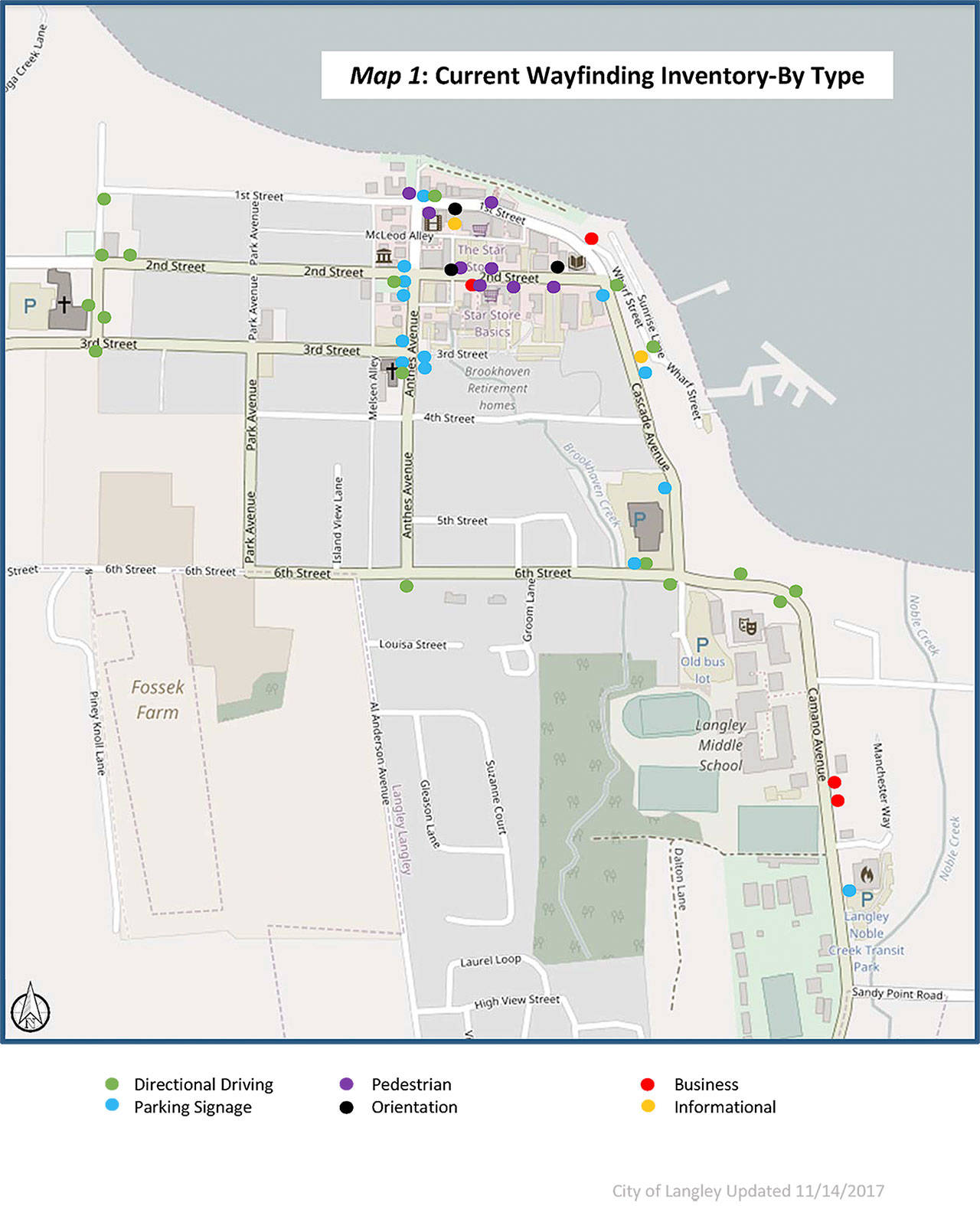Addressing deficiencies with the City of Langley’s wayfinding and coming up with creative ways to improve it beyond signage were some of the subjects at a public meeting this past week.
The meeting on Nov. 15 at the Langley United Methodist Church was drawn to develop a comprehensive wayfinding strategy for Langley that will help business, increase tourism and create bolster the city’s brand.
“We’re looking at creating a comprehensive plan that reaches out to walkers, bikers, drivers, residents, visitors,” said Kelsey Loch, the city’s assistant planning director who led the meeting.
Effective wayfinding can help guide people in and around a city and lead them to amenities and businesses, but the opposite can result in confusion and ambiguity. Wayfinding can include anything from identifying landmarks to using GPS on a smart phone, though it’s most often associated with signage.
Input was taken from the half dozen people who attended in order to find solutions to current problems with signage and other wayfinding tools.
The attendees reached a few consensuses. Foremost is the need for pointing people in the right direction for parking; current signage is cluttered and lacks both cohesion and precision. Both visitors and residents need to know where they can park in town, Loch said.
“As always, parking in Langley is an issue,” Loch said. “People need to know where it is.”
Fred Lundahl, a First Street merchant who co-owns Music for the Eyes, said there needs to be a way to tell people where they can go before they get into town, whether that means fine tuning Langley’s brochures or creating walking maps. He also said there should be more awareness of available parking at the Langley United Methodist Church, which has a contract with the city to accommodate a need for short-term parking. Lundahl suggested putting up signs that could say, “Where Would Jesus Park?”
Loch said there also needs to be a balance between parking and pedestrian signage, which is currently skewed to drivers; there are 17 directional driving signs and 14 parking signs, compared to only eight pedestrian signs.
“It’s a pretty small town,” Loch said. “People should be encouraged to walk around. They should have information if they need it to walk around and find where they’re going, not just focused on the drivers in Langley.”
Another attendee, Graham Johnson of Useless Bay, suggested that there needs to be more attention paid to the Langley Chamber of Commerce’s visitor information sign. Johnson suggested strategically placed signs with a specific brand.
“I think the Boy and Dog Park should become the symbol on signs,” Johnson said. “Because that brings them to the center of First Street.”
Beyond signage, attendees brainstormed ways to give walkers the ability to discover more on their own. Ross Chapin, a Langley-based architect, said that good wayfinding should show by design, not signage.
“It should show, not say,” Chapin said. “I think that we’ve got a signage clutter problem of too many signs of too many different things that are too obscure.”
He said the first objective should be looking at which signs to get rid of, followed by finding ways to draw people along a natural path to the city’s interior.
“If we have enough beads on the string, you’re going to go from one to another to another and you’re going to be led along the way,” Chapin said. “It may be that you’re shown the way to parking without another sign. At some point you do need signs…but there may be other ways.”
Loch replied that the end goal is removing signs and that most of them need to be repaired or replaced anyway.
She said that art may be a way of attracting people to a location, much like how the Boy and Dog Park sculpture by Georgia Gerber on First Street brings people to the overlook of Saratoga Passage. As an example, Loch suggested putting a sculpture near Anthes Avenue as a way of drawing them to business along the street.



